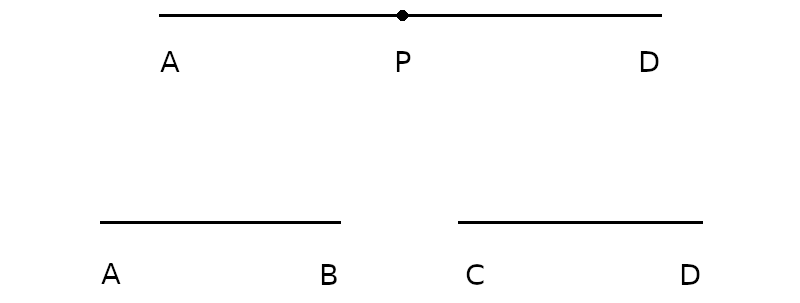
Divide line interval AD at point P and separate the halves by a short distance.
What’s happened to point P? Did it become point B or C? It seems wrong to say that it’s neither of these, or that it’s only one of them.
But if the single point P has “become” the two points B and C, how can we say it was a dimensionless object?
(Hilary Putnam, “Peirce’s Continuum,” in Kenneth Laine Ketner, ed., Peirce and Contemporary Thought: Philosophical Inquiries, 1995, via Piotr Łukowski, Paradoxes, 2011.)
